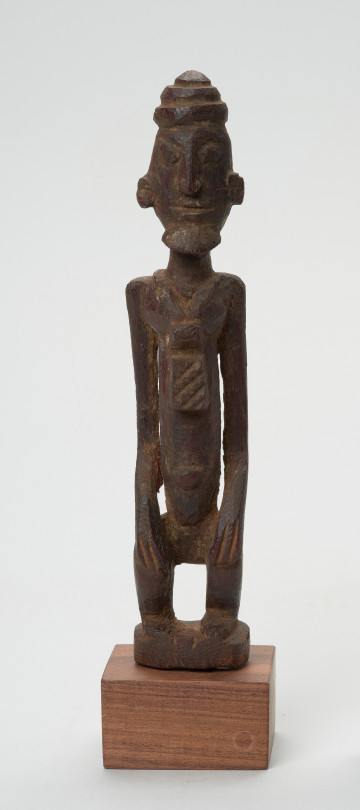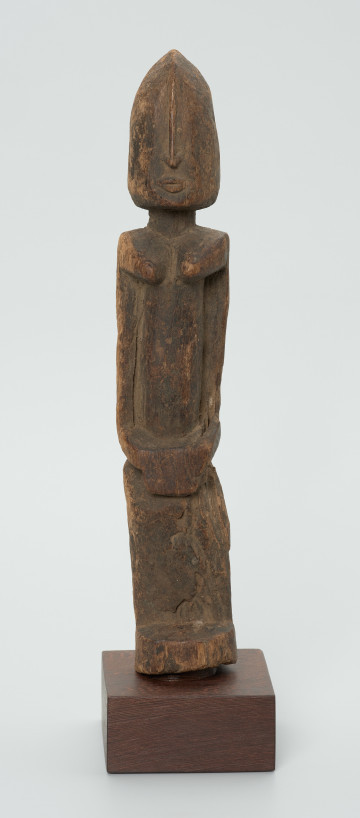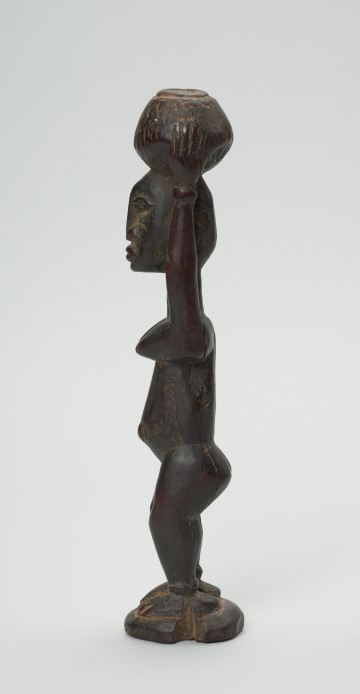
Figure -hogon
między 1951 — 2000
National Museum in Szczecin
Part of the collection: Collection of Dogonian art
The figurine depicts Hogon, the priest of the Lebe cult, who often also serves as the chief of a village or group of villages. The cult of Lebe is the cult of a mythical ancestor embodying the forces of the earth and vegetation. It is one of the cults of life, which is why Hogon cannot contact death. He never participates in funeral ceremonies, does not hunt or make sacrifices. The selection of a Hogon is a complicated process, requiring many consultations, sometimes taking several years. Although formally he should be the oldest male in the village, other qualities such as his effectiveness in bringing rain, his ability to settle disputes and his mediation skills are also considered. The priest of Arou village is considered the most important of Hogons. Hogon is the earthly equivalent of the Sun, his body is hot, and his touch can burn crops and land. His movements must be slow and restrained; too violent could disrupt plant growth. The priest's soul is in constant contact with the souls of the seeds and stimulates their growth. Every morning he turns his face to the east and assists the Sun in its wandering in the sky. The costume of the priest of the Lebe cult consists of sandals symbolising the Ark of Nommo, long trousers, a tunic and a round red cap plaited in a spiral, for it represents the movement with which Amma brought the universe into existence. Other essential accessories of Hogon are a pendant called Lebe duge, hung around the neck, an iron bracelet worn on the right leg, a copper ring in the ear and a silver ring on the finger of the right hand. Hogon also possesses a Lebe baga reed, which he hands to his representatives, Hogons of Titiyayne, when he wishes to convey a decision to the villagers through them. Hogon holds his position until his death.
Ewa Prądzyńska
Author / creator
Dimensions
cały obiekt: height: 54 cm, width: 9 cm
Object type
figure
Creation time / dating
Creation / finding place
Identification number
Location / status

między 1951 — 2000
National Museum in Szczecin

między 1951 — 2000
National Museum in Szczecin

między 1951 — 2000
National Museum in Szczecin
DISCOVER this TOPIC
National Museum in Lublin
DISCOVER this PATH
Educational path